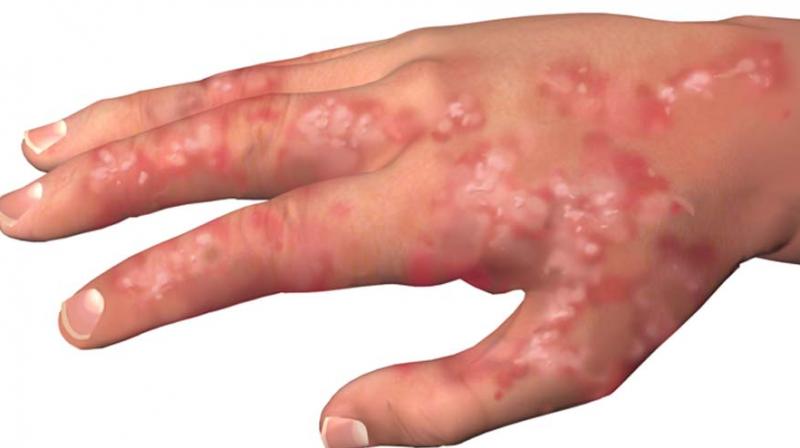Cellulitis, a bacterial skin infection, was once limited to a few cases during the rainy season in the erstwhile Karimnagar district. However, it has now become widespread in the region.
Causes
Cellulitis is caused by two types of bacteria: Streptococcus and Staphylococcus. These bacteria are normally present on the skin’s surface. The infection occurs when these bacteria enter deeper layers of the skin through a crack or break in the outer layer.
Commonly Affected Groups
- Agricultural Workers: Those working in fields are at risk due to frequent skin injuries.
- Construction Workers: Exposure to physical injury and dirt increases risk.
- Individuals with Skin Injuries: Cuts, bruises, and scrapes can facilitate bacterial entry.
Symptoms
- Swollen Skin: Redness and swelling in the affected area.
- Red Rashes: Sudden appearance of red patches on the skin.
- Pain or Tenderness: Discomfort in the infected area.
- Fever: Accompanied by chills and sweating.
Transmission and Risk Factors
- Non-Contagious: Cellulitis does not spread from person to person.
- Infection Spread: Scratching after insect bites (bedbugs, mosquitoes, spiders, flies) can exacerbate the infection.
- Vulnerable Individuals: Those with poor personal hygiene or pre-existing conditions such as leukemia, HIV-AIDS, and diabetes are at higher risk.
Treatment and Prognosis
- Antibiotics: Effective treatment usually results in recovery within 24 hours.
- Serious Complications: If not treated early, cellulitis can be fatal or lead to severe complications if it spreads into the bloodstream.
Multiple-Choice Questions (MCQs):
- What is the primary cause of cellulitis?
- A. Viral infection
- B. Fungal infection
- C. Bacterial infection
- D. Parasitic infection
- Which bacteria are commonly associated with cellulitis?
- A. Escherichia coli and Pseudomonas
- B. Streptococcus and Staphylococcus
- C. Mycobacterium tuberculosis and Salmonella
- D. Candida and Aspergillus
- Which group is least likely to be affected by cellulitis?
- A. Agricultural workers
- B. Construction workers
- C. Individuals with high personal hygiene
- D. People with cuts and scrapes
- How does cellulitis usually spread?
- A. Through air
- B. Through direct person-to-person contact
- C. Through cracks or breaks in the skin
- D. Through contaminated water
- What is a key symptom of cellulitis?
- A. Persistent coughing
- B. Sudden appearance of red rashes
- C. Joint pain
- D. Severe headache
